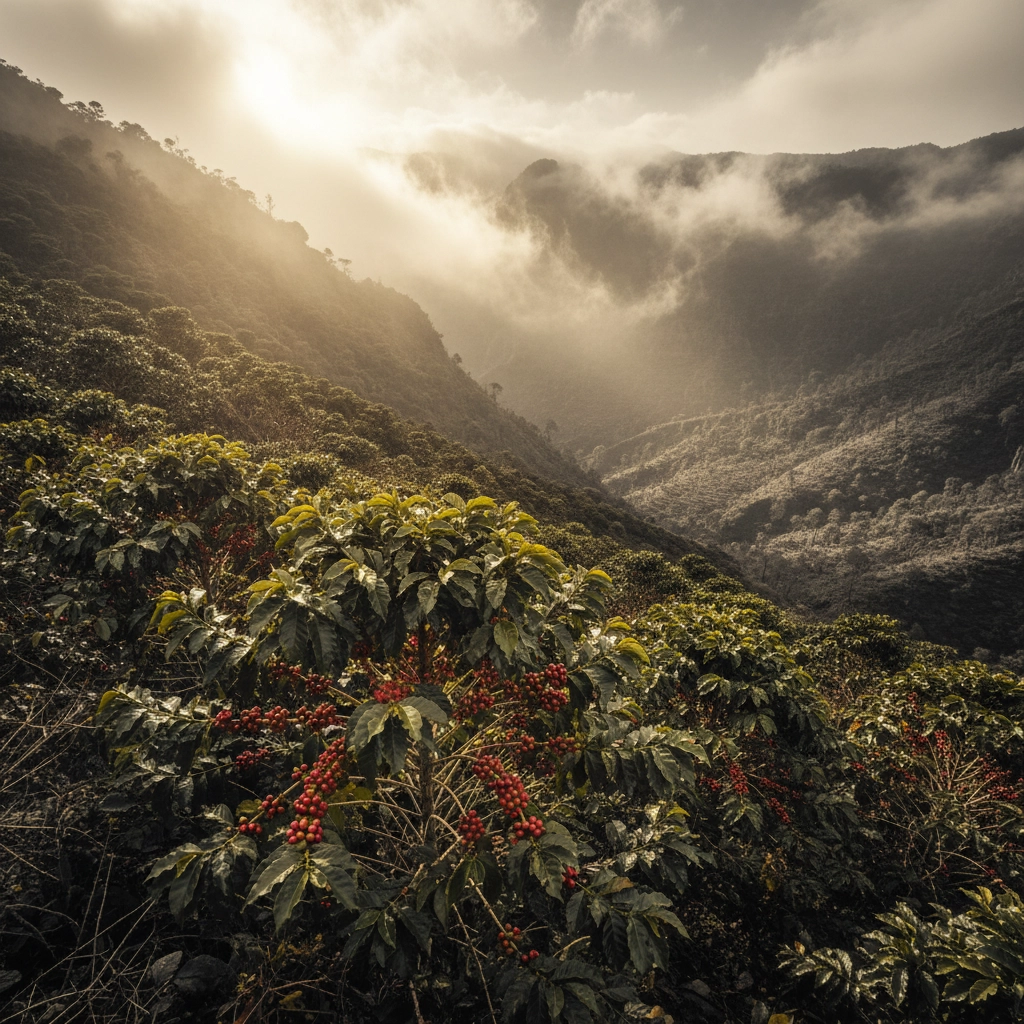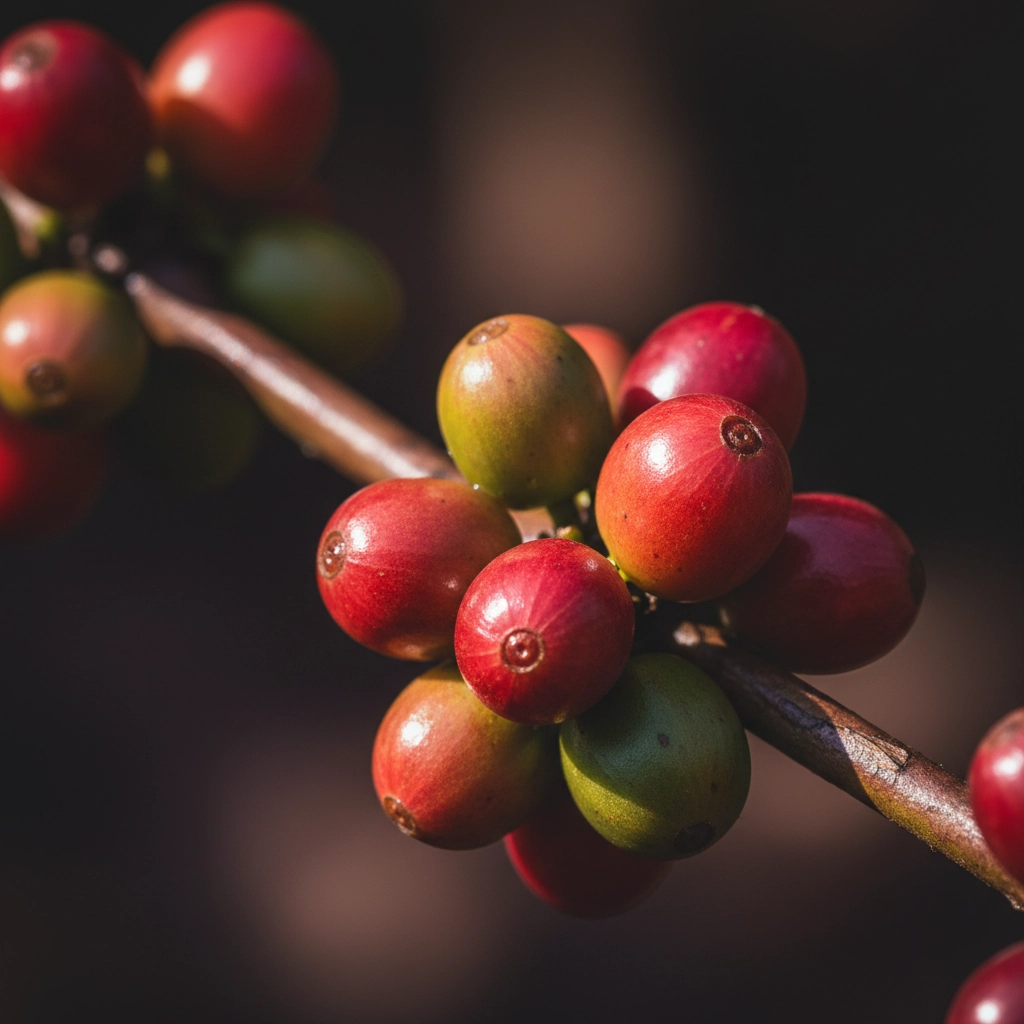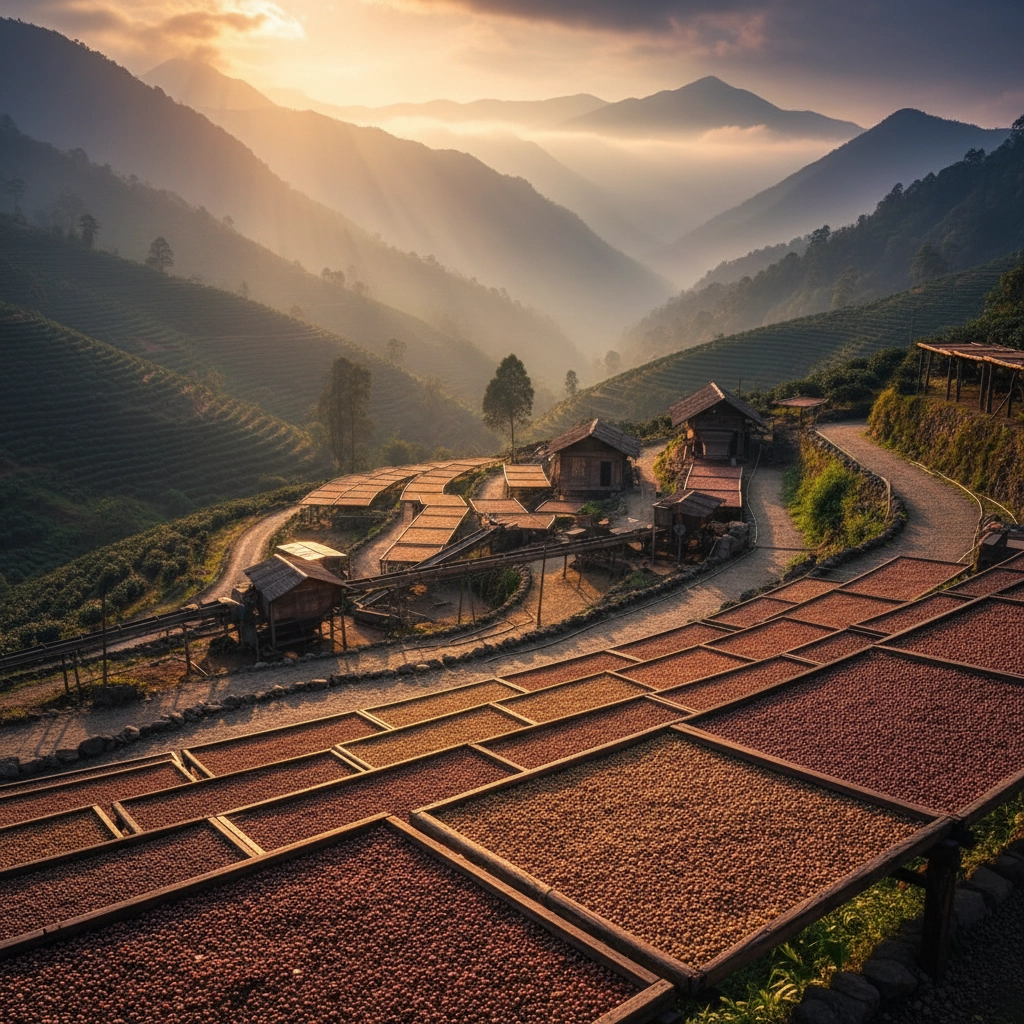Ever wonder why that bag of single-origin coffee from the mountains of Colombia tastes so different from beans grown at sea level? The secret lies thousands of feet above ground, where altitude works its magic on coffee flavor profiles in ways that might surprise you.
At Gently Ground Coffee, we're passionate about helping you understand what makes each cup special. Today, we're diving deep into one of coffee's most fascinating secrets: how elevation transforms simple coffee beans into complex flavor experiences.
The Science Behind Altitude and Flavor
When coffee plants grow at higher elevations, they face a completely different set of environmental challenges than their low-altitude cousins. Cooler temperatures, thinner air, and intense UV radiation create what coffee experts call "beneficial stress" – conditions that actually force the coffee plant to develop more complex flavors as a survival mechanism.

Think of it like wine grapes that struggle on rocky hillsides versus those that grow easily in fertile valleys. The struggling vines often produce more concentrated, interesting flavors. Coffee works the same way.
At high altitudes, coffee cherries ripen more slowly due to cooler temperatures. This extended growing season allows the beans to develop higher concentrations of sugars and organic acids, creating those bright, complex flavors that coffee enthusiasts love. The slower maturation process also results in denser beans with more concentrated flavor compounds.
High-Altitude Coffee: The Flavor Powerhouse
Coffee grown above 4,000 feet delivers some of the most sought-after flavor profiles in the coffee world. These high-altitude beans typically showcase:
- Bright, vibrant acidity that makes your taste buds sing
- Complex fruit and floral notes that unfold with each sip
- Clean, crisp finish that leaves you wanting more
- Higher sugar content for natural sweetness
Our Asian Plateau Blend perfectly captures these high-altitude characteristics, offering a bright and complex cup that showcases what elevation can do for coffee flavor.

The magic happens because of temperature differences. While low-altitude regions might see temperatures hovering around 80-85°F, high-altitude coffee farms often experience temperatures 15-20 degrees cooler. This temperature drop slows down the coffee plant's metabolism, giving it more time to develop those incredible flavor compounds.
Medium-Altitude Coffee: The Sweet Spot
Coffee grown between 2,000-4,000 feet offers what many consider the perfect balance. These beans provide:
- Moderate acidity that's approachable yet interesting
- Balanced body with good mouthfeel
- Nutty and chocolatey undertones mixed with subtle fruit notes
- Consistent flavor that's perfect for daily drinking
This is where many of our popular blends shine. Our Breakfast Blend captures this perfect middle ground, delivering complexity without overwhelming brightness – ideal for those morning moments when you need something reliable yet flavorful.
Low-Altitude Coffee: Smooth and Robust
Don't let anyone tell you that low-altitude coffee (below 2,000 feet) is inferior. These beans bring their own unique characteristics to the table:
- Lower acidity for a smoother, gentler cup
- Fuller body with rich mouthfeel
- Earthy and nutty flavors that provide comfort in a cup
- Chocolate undertones that satisfy without being overwhelming
Our Gourmet Donut Shop blend celebrates these low-altitude characteristics, offering a smooth, approachable cup that pairs perfectly with your favorite breakfast treats.

The Environmental Factors at Play
Altitude doesn't work alone in creating these flavor differences. Several environmental factors work together:
Temperature Variations: Higher altitudes mean cooler temperatures year-round. This consistent coolness slows plant metabolism and extends the cherry ripening period, allowing more time for flavor development.
Atmospheric Pressure: Lower air pressure at high altitudes affects how plants absorb nutrients and water, influencing bean density and flavor concentration.
UV Radiation: Increased UV exposure at higher elevations can stress plants in beneficial ways, encouraging the production of protective compounds that contribute to flavor complexity.
Rainfall Patterns: Mountain regions often have distinct wet and dry seasons, creating stress cycles that enhance flavor development.
How Processing Methods Interact with Altitude
Here's where things get really interesting: altitude effects can be enhanced or diminished by how the coffee is processed after harvest.
High-altitude coffees often benefit from washed processing, which helps preserve their natural brightness and acidity. Meanwhile, low-altitude coffees might shine with natural or honey processing methods that enhance their inherent sweetness and body.
Our French Roast demonstrates how darker roasting can complement beans from various altitudes, creating a bold, smoky profile that brings out the best in both high and low-altitude characteristics.

Altitude and Roast Levels: A Perfect Partnership
Different altitudes often call for different roast approaches:
High-altitude beans typically perform best with light to medium roasts that preserve their natural acidity and complex flavor notes. Too much heat can mask the delicate characteristics that make these coffees special.
Medium-altitude beans are versatile and can handle a wide range of roast levels, from light roasts that highlight their balanced nature to medium-dark roasts that bring out chocolatey sweetness.
Low-altitude beans often excel with medium to dark roasts that enhance their natural body and bring out rich, earthy flavors.
Our Whiskey Barrel Aged coffee showcases how unique processing methods can interact with altitude characteristics, creating something truly special that combines the best of both worlds.
What This Means for Your Coffee Experience
Understanding altitude's impact on coffee helps you make better choices for your taste preferences:
- Love bright, acidic coffee? Look for high-altitude beans from regions like Ethiopia, Kenya, or Central America
- Prefer smooth, mellow cups? Low-altitude coffees from Brazil or Indonesia might be your perfect match
- Want the best of both worlds? Medium-altitude blends offer complexity with approachability

Practical Tips for Coffee Lovers
When shopping for coffee, look for altitude information on the bag. Many specialty roasters include elevation details because they know informed customers appreciate this information. Here's what to expect:
- Above 5,000 feet: Expect bright acidity and complex fruit/floral notes
- 3,000-5,000 feet: Look for balanced acidity with nutty and chocolatey characteristics
- Below 3,000 feet: Anticipate fuller body with earthy, robust flavors
Remember, altitude is just one piece of the coffee puzzle. Soil type, farming practices, processing methods, and roasting all play crucial roles in your final cup. But understanding how elevation affects flavor gives you a powerful tool for exploring and appreciating coffee's incredible diversity.
The next time you're sipping your morning brew, take a moment to think about the journey those beans took – from the high mountain slopes where they slowly developed their complex flavors to your cup. That's the magic of altitude working in every single sip.




